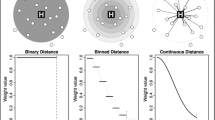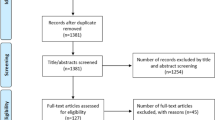Abstract
Healthcare accessibility research has been of growing interest for scholars and practitioners. This manuscript classifies prior studies on the Floating Catchment Area methodologies, a prevalent class of methodologies that measure healthcare accessibility, and presents a framework that conceptualizes accessibility computation. We build the Floating Catchment Method General Framework as an IT artifact, following best practices in Design Science Research. We evaluate the utility of our framework by creating an instantiation, as an algorithm, and test it with large healthcare data sets from California. We showcase the practical application of the artifact and address the pressing issue of access to quality healthcare. This example also serves as a prototype for Big Data Analytics, as it presents opportunities to scale the analysis vertically and horizontally. In order for researchers to perform high impact studies and make the world a better place, an overarching framework utilizing Big Data Analytics should be seriously considered.







Similar content being viewed by others
Notes
http://www.healthit.gov/providers-professionals/how-attain-meaningful-use, accessed on August 18, 2016
http://quickfacts.census.gov/qfd/states/06000.html, accessed on August 18, 2016
http://quickfacts.census.gov/qfd/states/06000.html, accessed on August 18, 2016
http://www.oshpd.ca.gov/, accessed on August 18, 2016
https://www.walkscore.com/, accessed on August 18, 2016
http://www.sunnumber.com/, accessed on August 18, 2016
http://quickfacts.census.gov/qfd/states/06000.html, accessed on August 18, 2016
References
Aday, L. A., & Andersen, R. (1974). A framework for the study of access to medical care. Health Services Research, 9(3), 208.
Barrett, M. A., Humblet, O., Hiatt, R. A., & Adler, N. E. (2013). Big data and disease prevention: from quantified self to quantified communities. Big Data, 1(3), 168–175.
Canlas, R. (2009). Data mining in healthcare: Current applications and issues. School of Information Systems & Management: Carnegie Mellon University, Australia.
d’Agostino, R. (1971). An omnibus test of normality for moderate and large size samples. Biometrika, 58(2), 341–348.
d’Agostino, R., & Pearson, E. S. (1973). Tests for departure from normality. Empirical results for the distributions of b2 and√b1. Biometrika, 60(3), 613–622.
Delamater, P. L. (2013). Spatial accessibility in suboptimally configured health care systems: a modified two-step floating catchment area (M2SFCA) metric. Health & Place, 24, 30–43.
Dony, C. C., Delmelle, E. M., & Delmelle, E. C. (2015). Re-conceptualizing accessibility to parks in multi-modal cities: a variable-width floating catchment area (VFCA) method. Landscape and Urban Planning, 143, 90–99.
ESRI (2016a). OD cost matrix analysis. http://desktop.arcgis.com/en/arcmap/latest/extensions/network-analyst/od-cost-matrix.htm. Accessed 18 Aug 2016.
ESRI (2016b). Optimized hot spot analysis. http://desktop.arcgis.com/en/arcmap/10.3/tools/spatial-statistics-toolbox/optimized-hot-spot-analysis.htm. Accessed 20 Aug 2016.
Fransen, K., Neutens, T., De Maeyer, P., & Deruyter, G. (2015). A commuter-based two-step floating catchment area method for measuring spatial accessibility of daycare centers. Health & Place, 32, 65–73.
Graham, M., & Shelton, T. (2013). Geography and the future of big data, big data and the future of geography. Dialogues in Human Geography, 3(3), 255–261.
Groves, P., Kayyali, B., Knott, D., & Van Kuiken, S. (2013). The ‘big data’ revolution in healthcare. http://www.mckinsey.com/industries/healthcare-systems-and-services/our-insights/the-big-data-revolution-in-us-health-care. Accessed 16 Nov 2016.
Guagliardo, M. F. (2004). Spatial accessibility of primary care: concepts, methods and challenges. International Journal of Health Geographics, 3(1), 3.
Hevner, A., & Chatterjee, S. (2010). Design research in information systems: theory and practice (Vol. 22): Springer.
Hevner, A., March, S. T., Park, J., & Ram, S. (2004). Design science in information systems research. MIS Quarterly, 28(1), 75–105.
Higgs, G. (2004). A literature review of the use of GIS-based measures of access to health care services. Health Services & Outcomes Research Methodology, 5(2), 119–139.
Jee, K., & Kim, G.-H. (2013). Potentiality of big data in the medical sector: focus on how to reshape the healthcare system. Healthcare informatics research, 19(2), 79–85.
Khan, A. A. (1992). An integrated approach to measuring potential spatial access to health care services. Socio-Economic Planning Sciences, 26(4), 275–287.
Langford, M., Higgs, G., & Fry, R. (2016). Multi-modal two-step floating catchment area analysis of primary health care accessibility. Health & Place, 38, 70–81.
Luo, J. (2014). Integrating the huff model and floating catchment area methods to analyze spatial access to healthcare services. Transactions in GIS, 18(3), 436–448.
Luo, W., & Qi, Y. (2009). An enhanced two-step floating catchment area (E2SFCA) method for measuring spatial accessibility to primary care physicians. Health & Place, 15(4), 1100–1107.
Luo, W., & Wang, F. (2003). Measures of spatial accessibility to health care in a GIS environment: synthesis and a case study in the Chicago region. Environment and Planning. B, Planning & Design, 30, 865–884.
Luo, W., & Whippo, T. (2012). Variable catchment sizes for the two-step floating catchment area (2SFCA) method. Health & Place, 18(4), 789–795.
Mao, L., & Nekorchuk, D. (2013). Measuring spatial accessibility to healthcare for populations with multiple transportation modes. Health & Place, 24, 115–122.
McGrail, M. R., & Humphreys, J. S. (2014). Measuring spatial accessibility to primary health care services: Utilising dynamic catchment sizes. Applied Geography, 54, 182–188.
Murdoch, T. B., & Detsky, A. S. (2013). The inevitable application of big data to health care. JAMA, 309(13), 1351–1352.
Musa, G. J., Chiang, P.-H., Sylk, T., Bavley, R., Keating, W., Lakew, B., et al. (2013). Use of GIS mapping as a public health tool—from cholera to cancer. Health Services Insights, 6, 111.
Ngui, A. N., & Apparicio, P. (2011). Optimizing the two-step floating catchment area method for measuring spatial accessibility to medical clinics in Montreal. BMC Health Services Research, 11(1), 166.
Polzin, P., Borges, J., & Coelho, A. (2014). An extended kernel density two-step floating catchment area method to analyze access to health care. Environment and Planning. B, Planning & Design, 41(4), 717–735.
Radke, J., & Mu, L. (2000). Spatial decompositions, modeling and mapping service regions to predict access to social programs. Geographic Information Sciences, 6(2), 105–112.
Raghupathi, W., & Raghupathi, V. (2014). Big data analytics in healthcare: promise and potential. Health Information Science and Systems, 2(1), 3.
Robinson, M., & Clegg, J. (2005). Improved determination of Q-factor and resonant frequency by a quadratic curve-fitting method. IEEE Transactions on Electromagnetic Compatibility, 47(2), 399–402.
Shah, N., & Pathak, J. (2014). Why health care may finally Be ready for big data. Harvard Business Review.
Siegel, M., Koller, D., Vogt, V., & Sundmacher, L. (2016). Developing a composite index of spatial accessibility across different health care sectors: a German example. Health Policy, 120(2), 205–212.
Soliman, S., Christensen, G., & Rouhi, A. (1988). A new technique for curve fitting based on minimum absolute deviations. Computational Statistics and Data Analysis, 6(4), 341–351.
Vo, A., Plachkinova, M., & Bhaskar, R. (2015). Assessing healthcare accessibility algorithms: A comprehensive investigation of two-step floating catchment methodologies family.
Wan, N., Zou, B., & Sternberg, T. (2012). A three-step floating catchment area method for analyzing spatial access to health services. International Journal of Geographical Information Science, 26(6), 1073–1089.
Wang, F., & Luo, W. (2005). Assessing spatial and nonspatial factors for healthcare access: towards an integrated approach to defining health professional shortage areas. Health & Place, 11(2), 131–146.
Author information
Authors and Affiliations
Corresponding author
Rights and permissions
About this article
Cite this article
Plachkinova, M., Vo, A., Bhaskar, R. et al. A conceptual framework for quality healthcare accessibility: a scalable approach for big data technologies. Inf Syst Front 20, 289–302 (2018). https://doi.org/10.1007/s10796-016-9726-y
Published:
Issue Date:
DOI: https://doi.org/10.1007/s10796-016-9726-y




